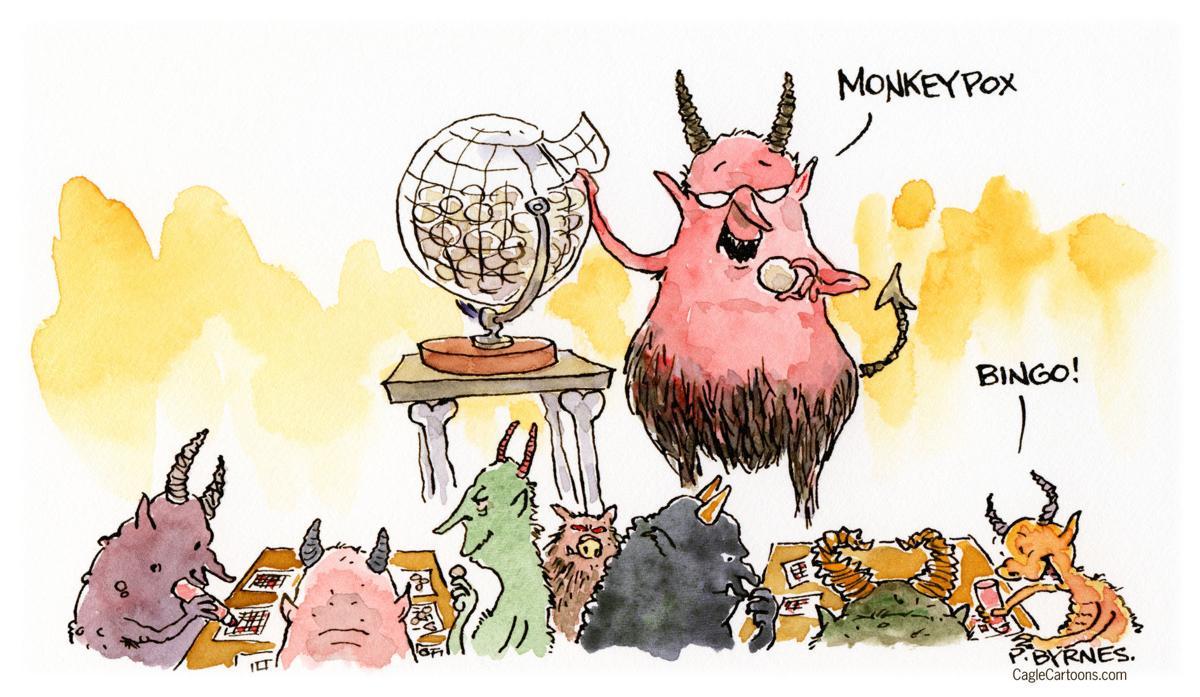
Misinformation Breeds More Fear of Minority Groups Along With Misunderstanding About Disease Itself
Careless messaging by global health agencies about the outbreak of monkeypox virus has created widespread public confusion, including associating the infectious disease with gay and bisexual men and with Africans.
The unwarranted and needless situation is a public health failure and has camouflaged the true nature of the outbreak, which does not discriminate between races, genders, or sexualities, posing a greater risk to the U.S. public at large.
According to the U.S. Centers for Disease Control and Prevention (CDC), more than 11,177 cases of monkeypox virus (MPXV) have been detected in the United States since May, with nearly all of them being gay and bisexual men, sometimes worded as “men who have sex with men (MSM).” Globally, more than 31,799 cases have been detected across 87 countries, with most of them in the U.S., Spain, the United Kingdom, and Germany.
The disease is closely related to the extinct virus variola, which caused smallpox. It was first detected in humans in West Africa in 1970, but has never reached such a wide-scale outbreak as presently exists. This outbreak is driven by the West African clade, which has a mortality rate of less than 1%. A two-shot vaccine, Jynneos, is produced by Danish company Bavarian Nordic and licensed by the U.S. Food and Drug Administration (FDA) to inoculate against monkeypox, and smallpox vaccines are predicted to provide protection as well, due to their similarity.
Health officials have clearly and repeatedly stated that everyone can catch monkeypox and that it is not sexually transmitted, meaning there is nothing unique about gay and bisexual men with respect to the virus. What is unique about queer men is that they are the only ones being tested, resulting in a false picture of the outbreak as being either only possible among them or that it is being spread by them.
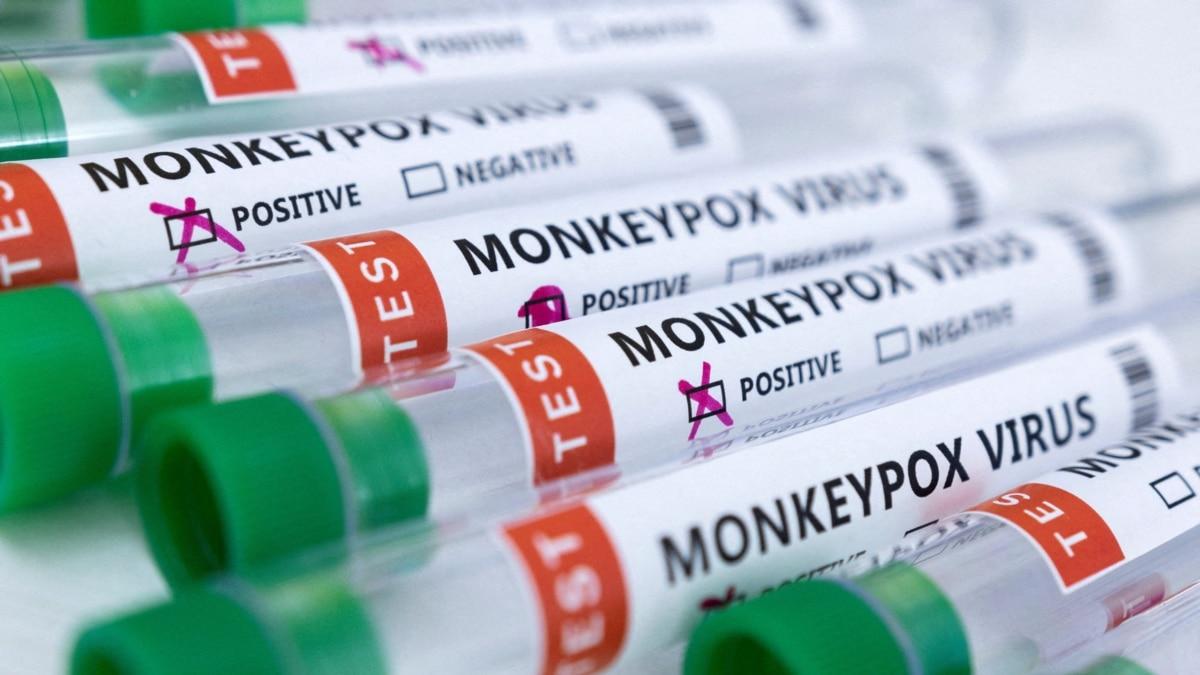
It is inevitable that this façade will eventually crumble and public health officials will be forced to admit that monkeypox is not a gay disease and that the vast majority of people infected with monkeypox are not queer men, transgender women, or people who frequent raves and sex clubs, but simply people with the misfortune of having brushed against an infected person on the subway, to give one likely scenario. By then it may be too late to stop monkeypox from becoming endemic to the U.S. It did not have to be this way.
Monkeypox Gets Associated with Queer Men
The association with gay and bisexual men began with the United Kingdom’s Health Security Agency (UKHSA), which said in a May 16 bulletin that queer men needed to be specially monitored for signs of monkeypox infection. At the time, just four queer men had been found with monkeypox in the UK—three in London and another in northeastern England, none of whom had any connection to the three other known cases in the UK at the time. This was justified by the HSA as because “the virus spreads through close contact,” although it did not explain how that activity is unique to queer men.
The central corporate media outlets then republished this alert without interrogating its contents, including LGBTQ-oriented media like Pink News. However, some, such as health-oriented Boston Globe spinoff Stat News, plainly stated that “It is not known how any of these people contracted the virus,” noting that “transmission is thought to occur mainly through virus-laced droplets, but direct contact with lesions or bodily fluids from an infected person, or indirect contact via contaminated clothing or linens, can also result in transmission.”
All this is not to say that the concerns of public health officials were unwarranted. The UKHSA, CDC and World Health Organization (WHO) correctly notified health clinics about how to differentiate between sexually transmitted infections (STI) and monkeypox vesicles, concluding that people would find the vesicles, assume they were an STI, and seek diagnosis. However, the framing of those alerts was such that, in the public eye, it became easy to conflate the spread of monkeypox with age-old stereotypes about gay and bisexual men, including that the community can serve as a disease vector for the general public.
They should have known better, since that is exactly what happened when Human Immunodeficiency Virus (HIV) burst onto the scene in the early 1980s.
GRID 2.0
By May 22, 2022, the media frenzy over monkeypox had so convoluted the message of health authorities that the Joint United Nations Program on HIV and AIDS (UNAIDS) felt compelled to urge “media, governments, and communities to respond with a rights-based, evidence-based approach that avoids stigma.”
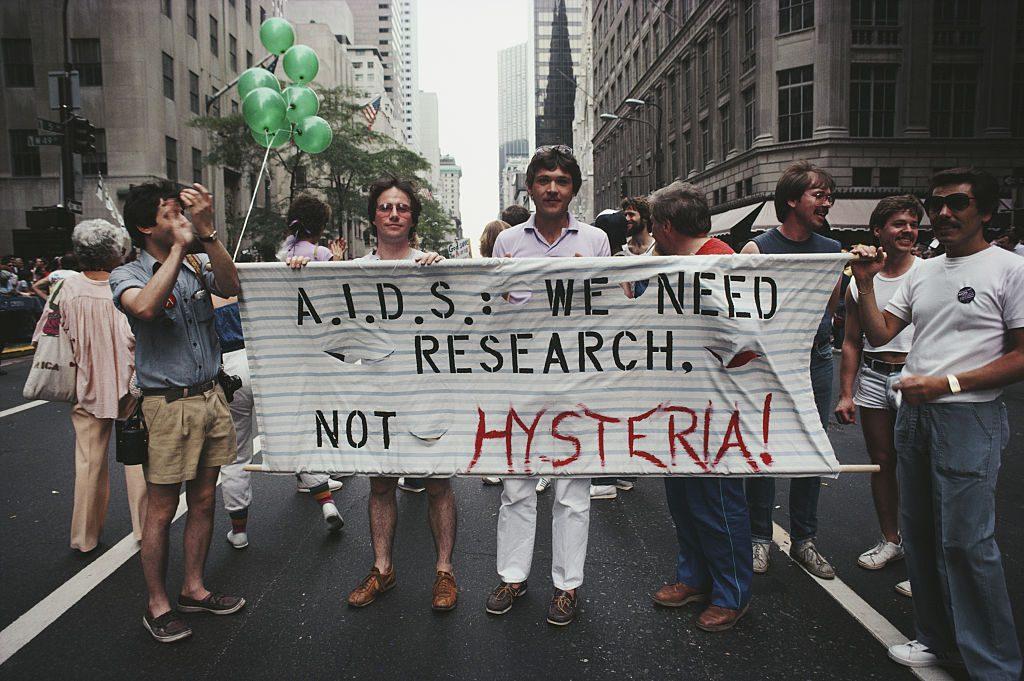
“UNAIDS has expressed concern that some public reporting and commentary on monkeypox has used language and imagery, particularly portrayals of LGBTI and African people, that reinforce homophobic and racist stereotypes and exacerbate stigma. Lessons from the AIDS response show that stigma and blame directed at certain groups of people can rapidly undermine outbreak response,” the agency said.
Indeed, in addition to the association with queer men, monkeypox has also been associated with Africans in media reports, thanks to widespread use of example photos showing monkeypox vesicles on Africans and the unfortunate serendipity of the virus’s name with a racist slur for people of African descent. The situation has prompted the WHO, at the behest of petitioning African doctors, to consider renaming the virus.
While HIV likely made the zoonotic jump from apes to humans in West Africa earlier in the 20th century, it went undetected as a unique illness until the early 1980s, when a cluster of rare cancers and diseases, including Kaposi’s sarcoma and Pneumocystis pneumonia, was found in what seemed to be otherwise healthy adult men. Most were gay or bisexual, and the association with the queer community continued, such that when it was hypothesized in May 1982 that the mystery illness was an STI, it was named Gay-Related Immunodeficiency (GRID).
A CDC epidemiologist, Harold W. Jaffe, told The New York Times in June 1982 that the pattern of infections was not “random” but “indicates a certain style of life.” Again, this is a descriptive term, since among some parts of the queer community, anonymous sex was (and still is) a regular practice, but given the prevailing homophobic cultural stereotypes of the time, there was only one way the public could interpret his words: The gays are spreading a plague because of their promiscuous, sex-crazed lifestyles out of sync with normal American Christian civilization.
It was a line of attack that preachers and their congregations quickly picked up on and never let go. In 1991, President George H.W. Bush dismissed AIDS as “a disease where you can control its spread by your own personal behavior.”
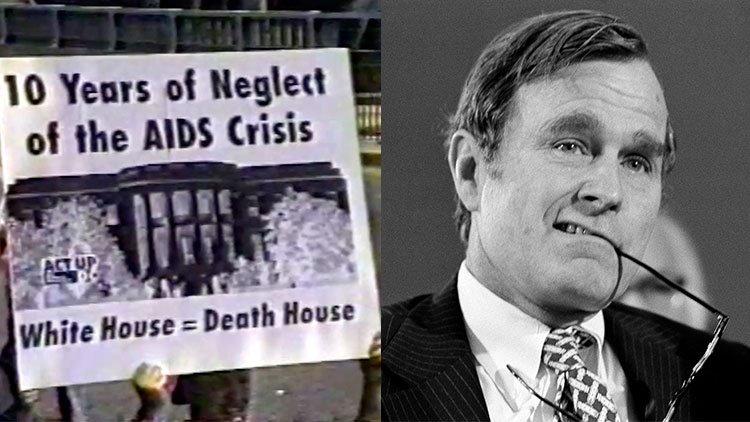
Officials very quickly realized the problem with this name, however: Roughly half of those found with the illness were not gay! The name then shifted over the summer of 1982 to the wider but no less discriminatory name of “4H disease,” referring to homosexuals, hemophiliacs, heroin users, and Haitians. By August 1982, the CDC had coined the descriptive name of Acquired Immunodeficiency Syndrome (AIDS). However, the cultural associations persisted, resulting in discrimination and violence against all the named communities.
This sequence of events is not ancient history, and its memory has cut a deep scar across every community affected by it, but especially Black and LGBTQ people. Moreover, AIDS is not gone and neither are the stereotypes created in those early years, and there are many echoes of it in the reporting on monkeypox.
False Connection Drives Anti-LGBTQ Attacks
The perception that monkeypox is a “gay disease” has already percolated into the public, as an August 7 attack on two queer men on a Washington, DC, street demonstrates.
The duo were attacked by a group of teenagers who called them “monkeypox f*ggots” among other homophobic slurs before physically assaulting them, requiring a six-hour stay in the emergency room to treat their head wounds.
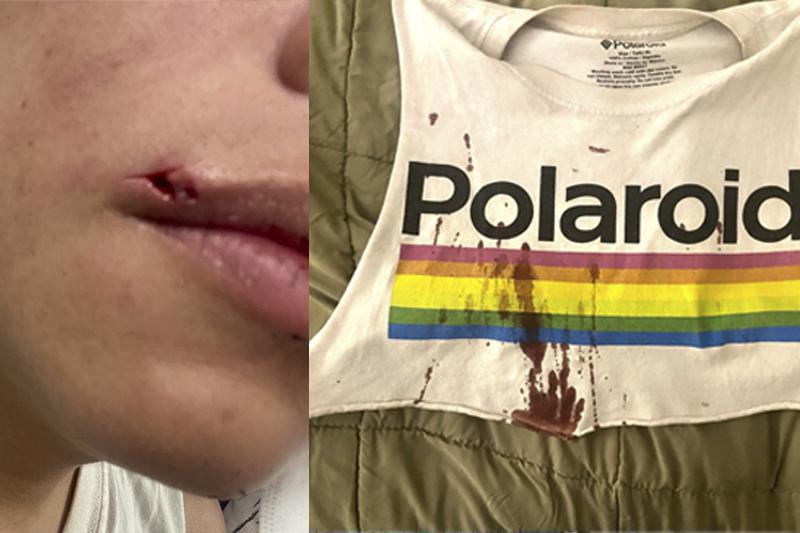
The American far-right has also picked up on this opportune line of attack to complement its tsunami of anti-LGBTQ activity, with Fox News talk show host Tucker Carlson calling it “schlong covid” and Rep. Marjorie Taylor Greene (R-GA) saying monkeypox is spreading by “gay sex orgies,” adding that “you are not supposed to talk about how it really gets spread around.”
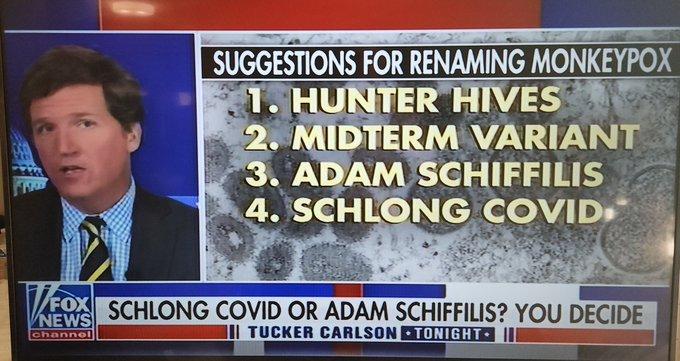
The right wing’s scapegoating of LGBTQ people and other minorities is, in turn, aimed at keeping the working class divided against itself.
As the US empire continues to decline, inequality continues to rise, and working people are increasingly uniting their struggles across race, gender and sexuality, the capitalist class is beginning to lose its grip.
They have recently proven willing to deliberately crash the US economy to drive up both unemployment and their profits and to weaken the power of organized labor, and to try and provoke war against nuclear powers Russia and China, so desperate is their situation.
Unfairly blaming LGBTQ people or Africans for the spread of a new disease, whether a deliberate orchestration or the product of simple absentmindedness in the face of prevailing stereotypes, is nothing but grist to their mill.
African CDC Dismisses Gay Association
For a counterpoint to the Western response, look no further than Africa’s Centers for Disease Control (ACDC), where health officials have studied monkeypox outbreaks since the first cases were detected among simian subjects in the 1950s.
“We have not seen any evidence of any specific group of persons being affected by monkeypox,” Ahmed Ogwell, the agency’s acting director, told reporters on August 4. “All communities, all ages, all genders are at risk.” He urged people to “avoid definitions and communications that may stigmatize those exposed.”
“It’s not an issue here,” he said of Western health agencies’ associations of the disease with queer men. “And frankly, we don’t want to make it an issue because we have serious outbreaks to manage and don’t want to get into a discussion that will distract us [from preparedness and response].”Sadly, the Associated Press story carrying Ogwell’s comments attempts to equate them with homophobia, noting that most of Africa’s 54 countries criminalize homosexuality.
“We Have No Concept of the Scale”
Despite warnings about the dangers of discrimination and fact sheets stating that monkeypox virus does not prefer queer over straight hosts or men over women, agencies like the WHO have continued to put out highly public alerts to gay and bisexual men treating them as if they are uniquely predisposed to catching it. Moreover, health agencies across the U.S. have adopted policies heavily influenced by these biased statements, which have given a false picture of the outbreak as having a queer face.
At a press conference on July 27, WHO chief Tedros Adhanom Ghebreyesus said that “the focus for all countries must be engaging and empowering communities of men who have sex with men to reduce the risk of infection and onward transmission, to provide care for those infected, and to safeguard human rights and dignity.”

Tedros’s speech highlights much of the confusion about monkeypox messaging. Although he noted that “anyone exposed can get monkeypox” and listed numerous ways irrespective of gender or sexuality that one could catch it, this comes after stating that “98% of cases so far are among men who have sex with men.”
Taken at face value, as media agencies and the general public are likely to do—and indeed have done—the evidence seems to speak for itself: Basically, everybody with monkeypox is a queer man. However, this occludes a central failure of Western governments’ response to the outbreak: Health agencies are only testing gay and bisexual men.
In late June, New York University biologist Joseph Osmundson told National Public Radio that the testing regimen was so inappropriate that “we have no concept of the scale of the monkeypox outbreak in the U.S.”
“State officials are denying people testing because they’re using a narrow definition of monkeypox to decide who receives a test. They are testing in only a very restricted number of cases,” Osmundson told the outlet, which recounted testimonies of people with characteristic symptoms of monkeypox who were denied testing because the doctor said “a monkeypox test isn’t indicated.”
Jennifer Nuzzo, an epidemiologist at Brown University, also told NPR that a major driving force behind this is the convoluted system healthcare providers have to navigate to test a suspected case, including placing a special order for each test. In addition to the time demand, health clinics that do not specialize in LGBTQ or sexual health may be less experienced or less interested in sending specimens out for testing, driving additional self-selection toward identifying cases among LGBTQ people than among straight people.
At a July 15 press conference, Dawn O’Connell, the Assistant Secretary for Preparedness and Response in the US Department of Health and Human Services said they were “testing outside of” the community of queer men but finding few positives. She did not say how many women had been tested.
A UKHSA report most recently updated on August 5 said essentially the same, but also didn’t indicate how many women had been tested. Given that the public messaging has entirely focused around monkeypox being a gay disease, it stands to reason that very few women would get tested, even if showing symptoms such as lesions, meaning the data is self-selected predominantly to show queer men.
Vaccination Repeats Same Mistakes
While many cities have updated their testing criteria since June, vaccination remains stuck in the same restrictive standards. For example, New York City’s health department lists the following under its vaccine eligibility guidance:
“People who meet all of the following conditions can now be vaccinated [emphasis mine]:
- Gay, bisexual, or other man who has sex with men, and/or transgender, gender non-conforming, or gender non-binary
- Age 18 or older
- Have had multiple or anonymous sex partners in the last 14 days”
Chicago’s health department lists the same, but adds the following caveat: “The vaccine is not currently recommended for the general public, including (cis or trans) men who have sex with men without the additional criteria.”
In Washington, D.C., the criteria are looser, changing “and” to “or” in the above list, and adding “sex workers of any sex” and “staff of any sex at establishments where sexual activity occurs (e.g., bathhouses, saunas, sex clubs)” to the list, meaning they include some cisgender women in their vaccine eligibility.
Los Angeles County’s vaccination registration makes the most sense of the major U.S. cities, including wide exceptions for straight people and cisgender women. It was paused when this article went to publication, but it has the same standards as New York, adding that it is “directly communicating” with other groups to offer vaccination.
Those groups include “people who have had high- or intermediate-risk contact with someone with monkeypox; people who attended an event or venue where there was high risk of exposure through skin-to-skin or sexual contact to individual(s) with monkeypox; persons experiencing homelessness with high-risk behaviors; and people in high-risk cohorts identified by clinical staff in the LA County Jail system.”
There is another dimension to this situation, though: politics. President Joe Biden has boasted that he would “end” the COVID-19 pandemic since the 2020 election campaign trail, eventually declaring victory in a July 4, 2021, speech that hailed the mass vaccination campaign of the previous eight months.
However, after that triumph came the Delta and Omicron variants, which drove major new outbreaks, including the largest-yet in December 2021 to January 2022, and it became clear that COVID-19 was not going anywhere any time soon.
During that massive winter outbreak, official case numbers peaked at 1.35 million on January 10, 2022, and weeks later, the U.S. passed the grim milestone of one million deaths attributable to the virus. Four days after cases peaked, Biden announced a program to mail at-home tests to Americans, and they quickly became the dominant way Americans discovered their status, with no obligation to report the results.
This was a major public relations victory, since such massive case numbers would never again grace the nation’s headlines, but a public health disaster, since official case numbers have been fouled by a lack of accurate data ever since. It was, in essence, a privatization of the once-public burden of testing and tracking the spread of the virus; yet another example of neoliberalism’s destructive influence on public health.
Moreover, almost all of Biden’s political program until recently has stalled amid Republican roadblocking in the Senate and waffling by moderate Democrats, and the writing has been on the wall since the spring that a recession was on the horizon. For a dangerous new virus to make its entry at that time would be politically inopportune.

CovertAction Magazine is made possible by subscriptions, orders and donations from readers like you.
Blow the Whistle on U.S. Imperialism
Click the whistle and donate
When you donate to CovertAction Magazine, you are supporting investigative journalism. Your contributions go directly to supporting the development, production, editing, and dissemination of the Magazine.
CovertAction Magazine does not receive corporate or government sponsorship. Yet, we hold a steadfast commitment to providing compensation for writers, editorial and technical support. Your support helps facilitate this compensation as well as increase the caliber of this work.
Please make a donation by clicking on the donate logo above and enter the amount and your credit or debit card information.
CovertAction Institute, Inc. (CAI) is a 501(c)(3) non-profit organization and your gift is tax-deductible for federal income purposes. CAI’s tax-exempt ID number is 87-2461683.
We sincerely thank you for your support.
Disclaimer: The contents of this article are the sole responsibility of the author(s). CovertAction Institute, Inc. (CAI), including its Board of Directors (BD), Editorial Board (EB), Advisory Board (AB), staff, volunteers and its projects (including CovertAction Magazine) are not responsible for any inaccurate or incorrect statement in this article. This article also does not necessarily represent the views the BD, the EB, the AB, staff, volunteers, or any members of its projects.
Differing viewpoints: CAM publishes articles with differing viewpoints in an effort to nurture vibrant debate and thoughtful critical analysis. Feel free to comment on the articles in the comment section and/or send your letters to the Editors, which we will publish in the Letters column.
Copyrighted Material: This web site may contain copyrighted material the use of which has not always been specifically authorized by the copyright owner. As a not-for-profit charitable organization incorporated in the State of New York, we are making such material available in an effort to advance the understanding of humanity’s problems and hopefully to help find solutions for those problems. We believe this constitutes a ‘fair use’ of any such copyrighted material as provided for in section 107 of the US Copyright Law. You can read more about ‘fair use’ and US Copyright Law at the Legal Information Institute of Cornell Law School.
Republishing: CovertAction Magazine (CAM) grants permission to cross-post CAM articles on not-for-profit community internet sites as long as the source is acknowledged together with a hyperlink to the original CovertAction Magazine article. Also, kindly let us know at info@CovertActionMagazine.com. For publication of CAM articles in print or other forms including commercial internet sites, contact: info@CovertActionMagazine.com.
By using this site, you agree to these terms above.
About the Author

Morgan is a journalist, historian and activist based in Washington, DC.
She has long been an activist in the anti-war movement and the fight for women’s and LGBTQ rights, and writes about those struggles and more in the U.S. and around the globe.
You can follow her work on Twitter at @LavenderNRed.

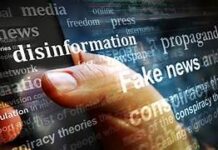



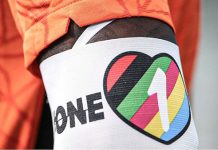


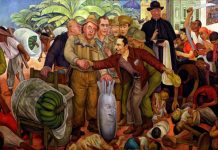


What is it with this site? I submitted a perfectly normal comment on the piece yesterday but it’s been removed but you’re publishing spam! What gives?
In reference to the statement attributed to U.S. Centers for Disease Control and Prevention (CDC) I cannot find find any evidence that they ever made this statement and on their web site they have a different explanation for the spread of the disease.
Well check this page, wherethey make a big deal out of the spread of the disease via sexual contact and, like the UK source that started the myth, no doubt it’s been ‘amended’.
https://www.cdc.gov/poxvirus/monkeypox/prevention.html
[…] U.S. Govt Falsely Associates Monkeypox Outbreak with Gays, Bisexuals and Africans, by Morgan Artyukh… […]